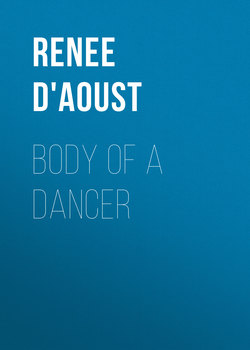Читать книгу Body of a Dancer - Renee D'Aoust - Страница 8
Body of a Dancer
ОглавлениеTwo years after Martha Graham died I stepped through the doors of Martha’s House of Pelvic Truth in New York City. I didn’t know it was called that then. All I knew was that I had to dance; training in the Graham technique—not to mention receiving a scholarship—seemed like the most direct route. My intuition was correct, but I neglected to realize that the route I chose may also have been the most damaging. As my spine straightened, my heart became buried deeper inside my body and desire began to reverse, curling in and around, twisting a love of movement into dedicated self-loathing. Martha Graham was still very much alive inside those walls; her ghost took hold of my senses, making me contract and move my body in ways I had previously thought impossible.
Grant, the grandson of our family friend Julie, said to me, “Remember why you came to the city—to dance—and do it. Then when you are done, remember to leave.” He was an apparition who appeared at the beginning of my New York City dance career. Although Martha Graham entered my mind, I remembered Grant’s advice. His voice stayed with me all the way, trying to drown out desperate desire with good common sense.
During the summer of 1993 in New York City, there was lamentation in the air. Martha Graham may have died of old age and a ruined liver, but now young people were dying. Lamentation was not for acts of terrorism, although the first World Trade Center bombing had just happened. Lamentation was everywhere for HIV and the plague of AIDS.
That fall after moving into a studio apartment on West 51st Street, I went to a performance by Elisa King’s modern dance pick-up group, and the singer/piano player sang a threnody for his friend who had died of AIDS. These elegies were a common feature of city life—performances that wove cultural loss into artistic expression. That same singer would later play for classes at the Martha Graham Center for Contemporary Dance and be fired because of his voice. Too much sadness, perhaps. The director simply told him that he made too much noise.
In the fall of 1993 I attended a performance at a small church in the theatre district. I went alone, as I often did. My Montana dance teacher had recommended that I take Graham classes with Elisa King, but at this point Elisa wasn’t available to the public because she was only teaching at the La-Guardia High School for the Performing Arts. Elisa had a beautiful breathy Graham movement so uncommon at the Graham Center itself. She wasn’t rigid, and her body sang the joys of contraction without constipation.
When I first came to the city, my body was recovering from a serious back injury. I’d strained the lower back muscles of the erector spinae group doing the choreography of one of the teachers at the University of Montana while performing in a showcase at the American College Dance Festival. Gus Solomons jr. (he likes that lower-case “j”) was judging, and the piece made it into the final performances. I spent most of the college festival on my back in a motel room in Ogden, Utah, thinking about taxes and spines. I literally could not move.
The teacher had been very nice—she’d given me flowers—but secretly I blamed her movement—I blamed her—for injuring my back. She incorporated spirals into and out of the floor in her choreography but gave no instruction on how to use the abdominal muscles to protect against over-twisting the back.
It’s a common mistake of an amateur choreographer to expect a dancer to recreate movement by imitation rather than by technique. A choreographer doesn’t have time to teach technique in rehearsal, but since dancers work for next to nothing, the least a beginning choreographer can do is not ruin a dancer’s body.
After two months of inactivity, I auditioned for a summer scholarship to the Martha Graham Center of Contemporary Dance sponsored by the Montana Dance Arts Association. They’d brought in Myra Woodruff to adjudicate. Myra was currently in the Graham Company and later I heard she became Maurice Béjart’s muse.
I won the scholarship everyone wanted: Graham. By then I wanted out of Montana. I’d moved there from Puget Sound in Washington State, which is where I was raised. In Montana I expected to marry a cowboy and live on a ranch. Lots of cowboys know how to dance, even if it is just line dancing. But, instead, in Big Sky country I found dance studios for the second time in my life and started moving my body. I also learned that quite often cowboys smell like manure and don’t bathe as often as a girl would like. No cowboy. No ranch. All my time spent inside. I wanted to dance. My body had to move. My body could barely move.
